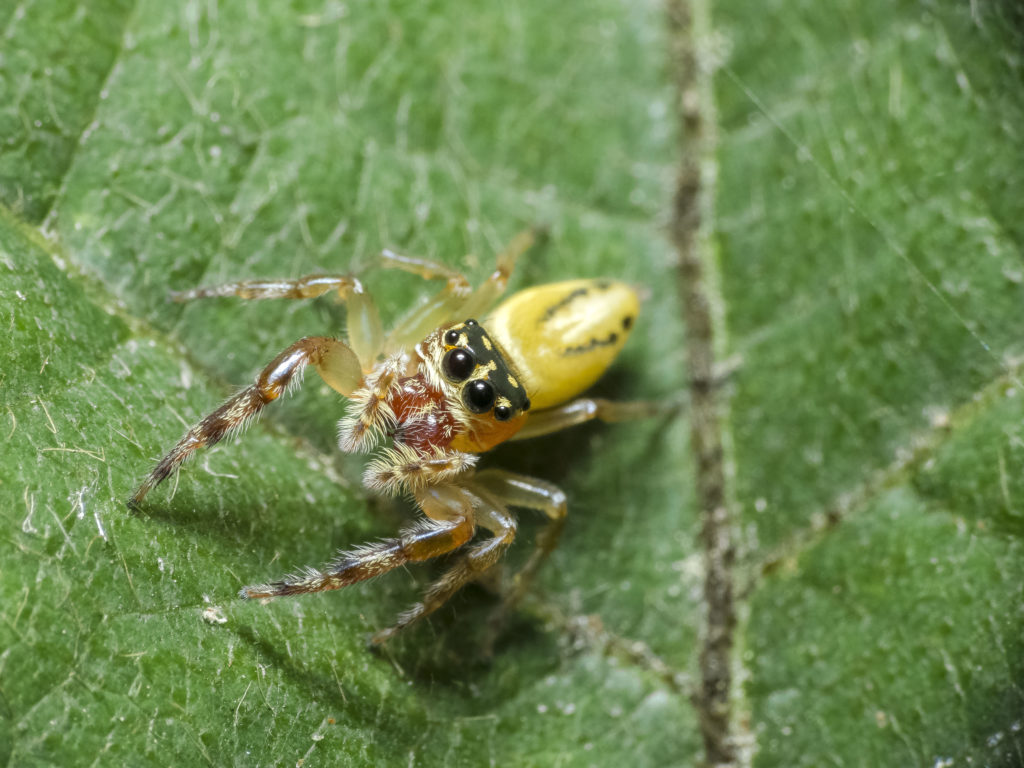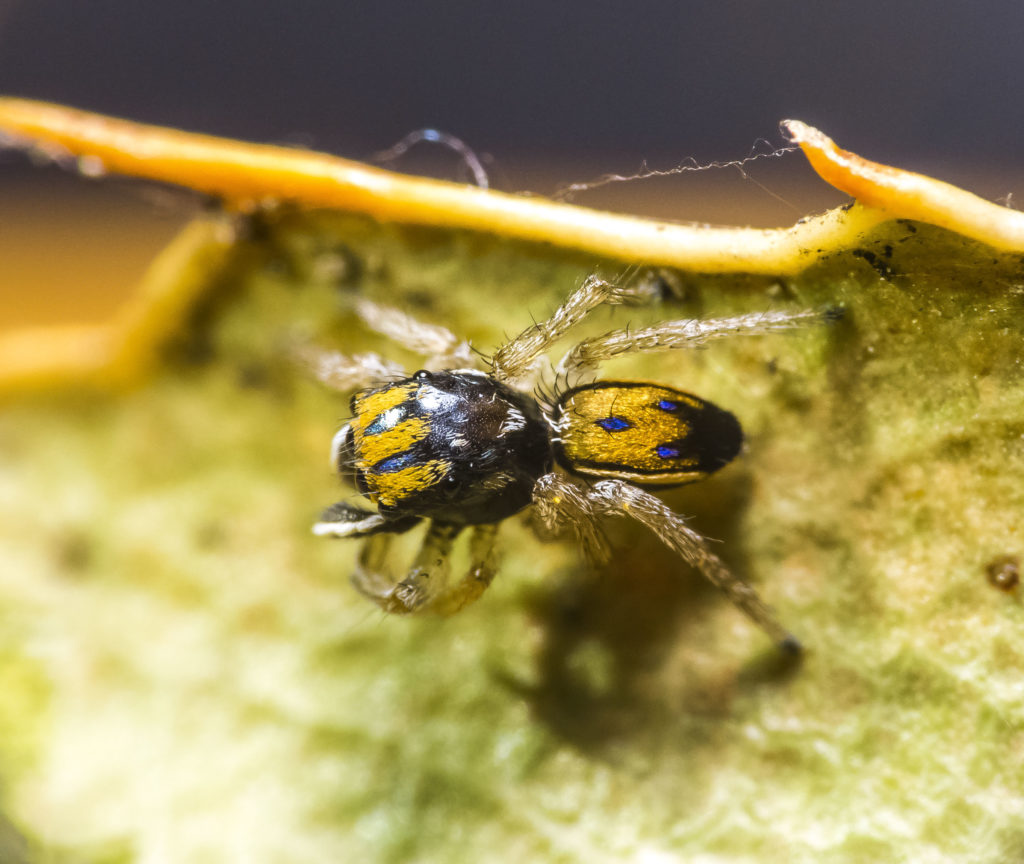Jumping spiders are the heavy lifters of the spider world. They have been curing arachnophobia, going viral online and are appearing on mainstream TV. Many new species of jumping spider are being found in Australia, both in remote regions and also in Brisbane backyards.
If you were to lightly beat the foliage of any shrub or small tree on your Land for Wildlife property, you would be almost certain to have a new species of spider in your collecting tray. This is because there are more undescribed and undiscovered spiders in Australia than there are known ones. Currently there are about 500 described species of jumping spiders in Australia, but it is very likely that this will expand to 3000–5000 species when the science is all done.

Jumping spiders make up about 13% of all described spiders, the highest number of species in any spider family.
All jumping spiders are recognisable because of their two large front eyes. Four of the remaining six eyes provide 360-degree vision, which is astonishingly good. They are able to see the moon nearly as well as we can, and have the ability to magnify their vision up to four times – a skill many of us wish we could share.
Their ability to track and ambush prey is amazing. They can calculate distances while watching their prey, then move to a vantage point out of line of sight and with a prodigious leap, fly through the air to grab their victim and immobilise it.
Jumping spiders have unusual mobility allowing their abdomen to move in elaborate and colourful displays. Some courtship displays in Maratus spp. (peacock spiders) feature a complicated ritual of leg waving, toe-tapping and abdomen twerking. Most have brilliantly coloured side flaps they extend like peacock tail feathers to mesmerise their mates.
Jumping spiders are small – the largest being only 15mm long. They can be antlike, beetle-like and can even mimic flies by walking backwards and having enlarged black spots on their abdomens.
The world of jumping spiders is thoroughly explored in my new book, which is reviewed on page 13.
Article and photos by Robert Whyte Co-author, A Field Guide to Spiders of Australia (2017).


This is wonderful information, thank you for this! I will now put my baby on the windowsill at night to see the night sky.